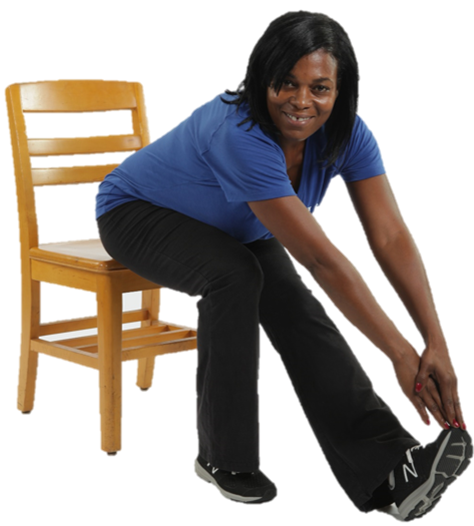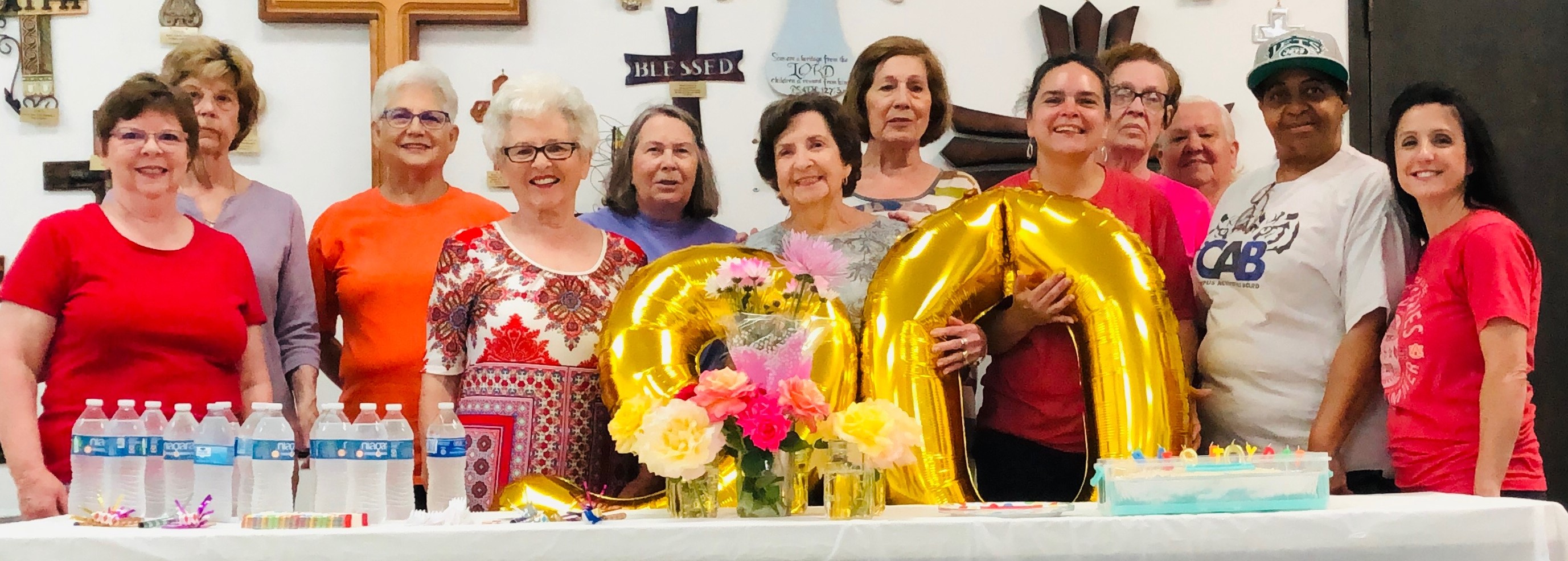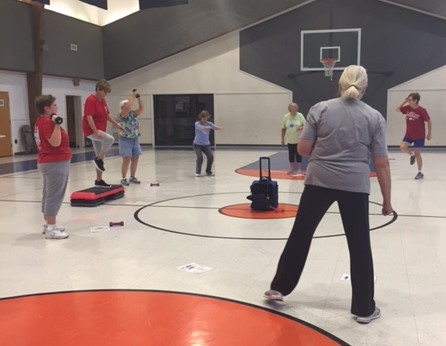Extension Get Fit

Extension Get Fit is research-based, safe, structured, and affordable.
The Extension Get Fit (EGF) Program is a community-based strength training program targeted to midlife and older Arkansans. Based on the latest research, the program is designed to:
- Improve strength, balance and flexibility
- Reduce the risk of falls
- Help maintain independence
- Increase energy
- Help manage your weight
- Decrease pain
- Help you feel better!
Participate testimonials
“If it was not for Extension Get Fit classes I would not get around as good as I am.” ~ Evelyn
“I would never exercise if it were not for getting together with my Extension Get Fit group. We keep each other accountable!” ~ Angela
What are classes like?
Classes meet for an hour at least twice a week, and each session includes a warm-up, 8 to 10 strengthening exercises, and cool-down. This program provides a supportive group environment and is appropriate for all fitness levels.
What do I need to participate?
You will need dumbbells and adjustable ankle weights to participate in the class.
How much does it cost?
The $20 program fee covers an entire calendar year. Scholarships are available.
Contact your county office for information.
Are there classes in my area?
For more information, contact your local county extension office.
You can also search for "get fit" in our calendar. If you don't see a class in your county, don't worry. You can still contact your agent to find out if classes are coming up!
Below is a group of Desha County Extension Get Fit participants working out in a circuit training class at a local gymnasium.
What are the other benefits of Extension Get Fit?
Getting healthier is a great benefit of Extension Get Fit, but so is making new friends! Participants hold one another accountable and have fun together while exercising. Check out the photo below of the Desha County Extension Get Fit group at a post-workout celebration!

Introduction to Extension Get Fit
Physical activity is important for adults of all ages. Despite strong evidence of the health benefits of physical activity, the majority of American do not regularly participate. There are many possible reasons why people do not engage in recommended physical activity - lack of time, lack of access to programs or facilities, and lack of motivation, to name a few. The Extension Get Fit (EGF) program aims to address some common challenges to engaging in regular, structured physical activity (referred to as exercise throughout this curriculum) by increasing access to structured and safe programs offered through local county Extension offices.
The EGF program employs a unique delivery strategy. After an initial program period held by county agents (typically 12 weeks), program sites are transitioned to instruction by a volunteer leader. Volunteer leaders are recruited from among the participant group. Volunteer leader structure allows Extension to provide ongoing access to Extension exercise opportunities and permits the agent to start a new Extension exercise group while still providing program oversight.
The EGF program was developed based on strength training research, with a focus on mid-life and older adults. This program is appropriate for adults of all ages. Modifications are offered for exercises in each of the structured routines in the program. The exercises may be tailored to individual needs and fitness levels.
Physical Activity Recommendations
The Physical Activity Guidelines for Americansrecommends adults regularly engage in two main types of physical activity: 1) aerobic activity (endurance or cardio activity) and 2) muscle-strengthening activity (resistance training). In addition to the general guidelines, older adults, those over the age of 55, should add balance training to their fitness routines.
Current guidelines recommend that adults engage in 150-minutes of moderate-intensity or 75- minutes of vigorous-intensity physical activity throughout the week. These types of activities increase breathing and heart rate. Examples of exercises that are moderate-intensity include brisk walking (at least 2.5 miles per hour), water aerobics, and bicycling (slower than 10 miles per hour on level ground). Vigorous-intensity exercises include jogging, swimming laps, step aerobics, jumping rope, and bicycling (over 10 miles per hour). Actions, such as general yard and house work, can also be considered aerobic activity if they increase the heartrate.
Adults should engage in muscle-strengthening activities two or more days a week targeting
all major muscle groups. The major muscle groups are the shoulders, arms, chest, abdomen,
back, hips/glutes and legs. Exercises that target the same muscle group should not
be performed on consecutive days. Be sure to include a rest day in between sessions
to allow muscles time to recover. Muscle-strengthening exercises include using dumbbells,
ankle weights, stretch tubes, and weight machines. Exercises can use your own body
weight for resistance, such as lunges, squats, and push-ups, also build strength,
Actions, such as carrying heavy loads and heavy gardening, are also considered muscle-strengthening
activities.
Balance training is recommended for older adults to help resist falling and should be performed at least three days a week. Examples of balance training activities include walking heel-to-toe and moving between a standing and sitting position. Muscle-strengthening activities that target the back, abdomen, and legs will also help to improve balance. To ensure older adults meet the current guidelines, multi-component physical activity is recommended. Multi-component includes more than one type of physical activity, or a combination of aerobic, muscle strengthening and balance. Examples of multi-component activities include dancing, yoga, tai chi, sports, and gardening.
Flexibility, or stretching, helps improve the mobility of a joint. This type of activity can be performed every day, but be sure muscles are warm. Flexibility activities are important for overall physical fitness and should be included when engaging in physical activity. It is important for older adults to maintain the flexibility needed to engage in normal daily activities. Examples of flexibility activities include the calf stretch, hamstring stretch, quadriceps stretch, and chest and arm stretch.
